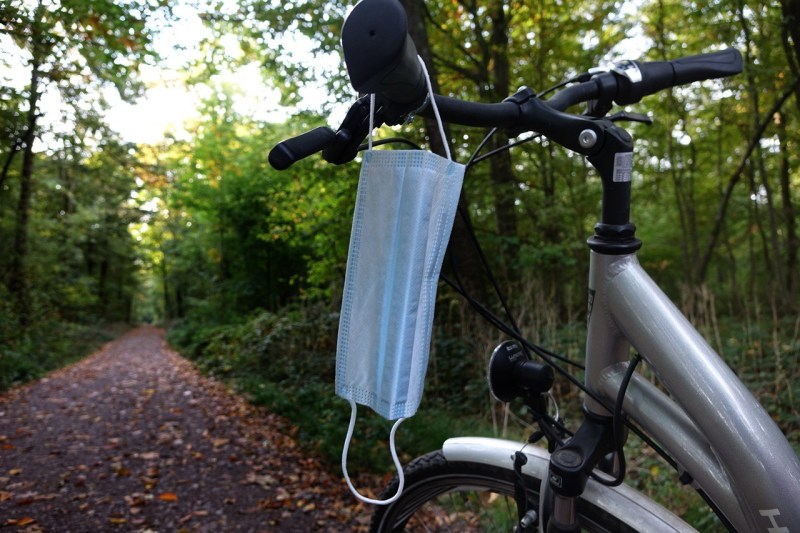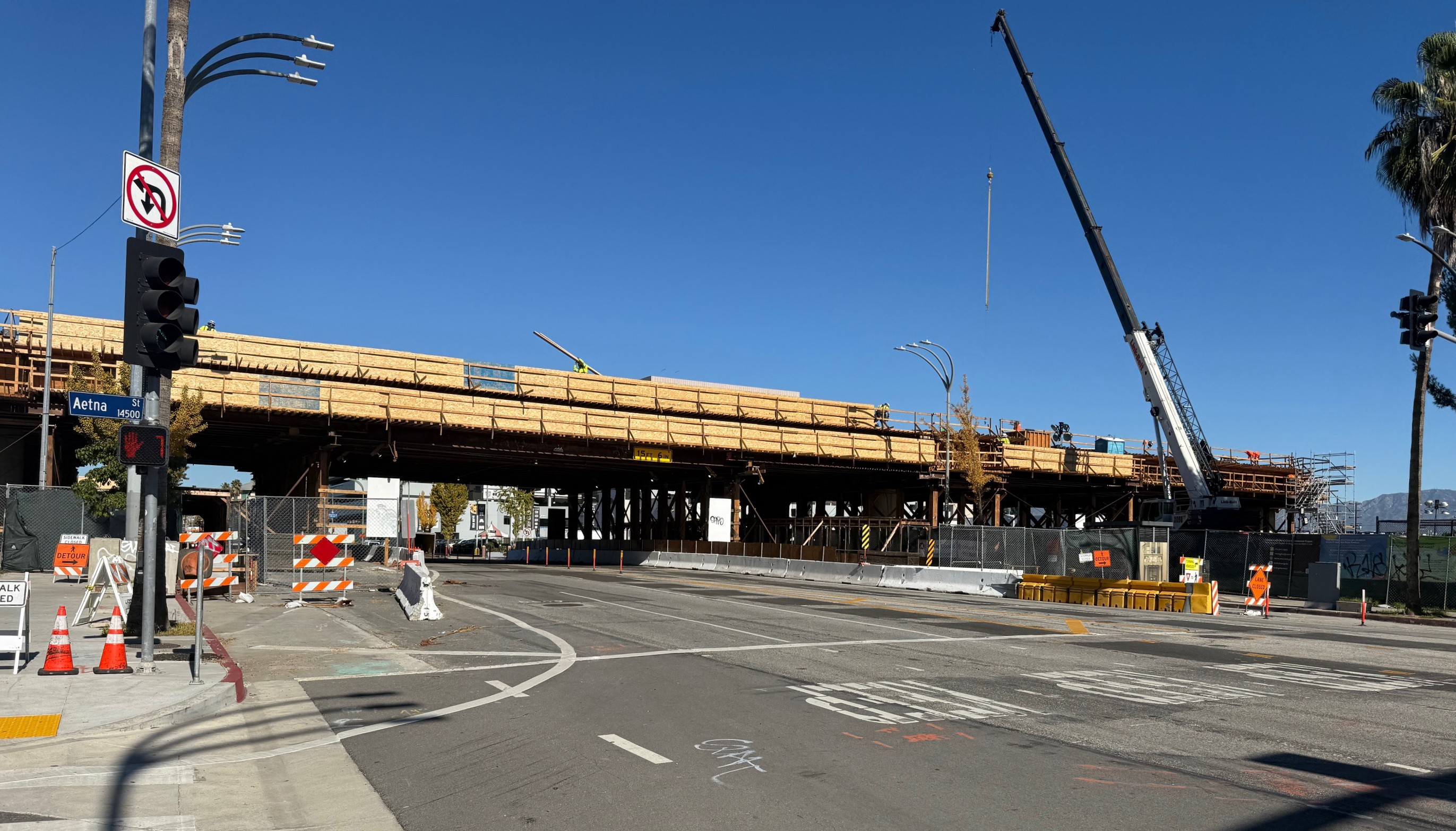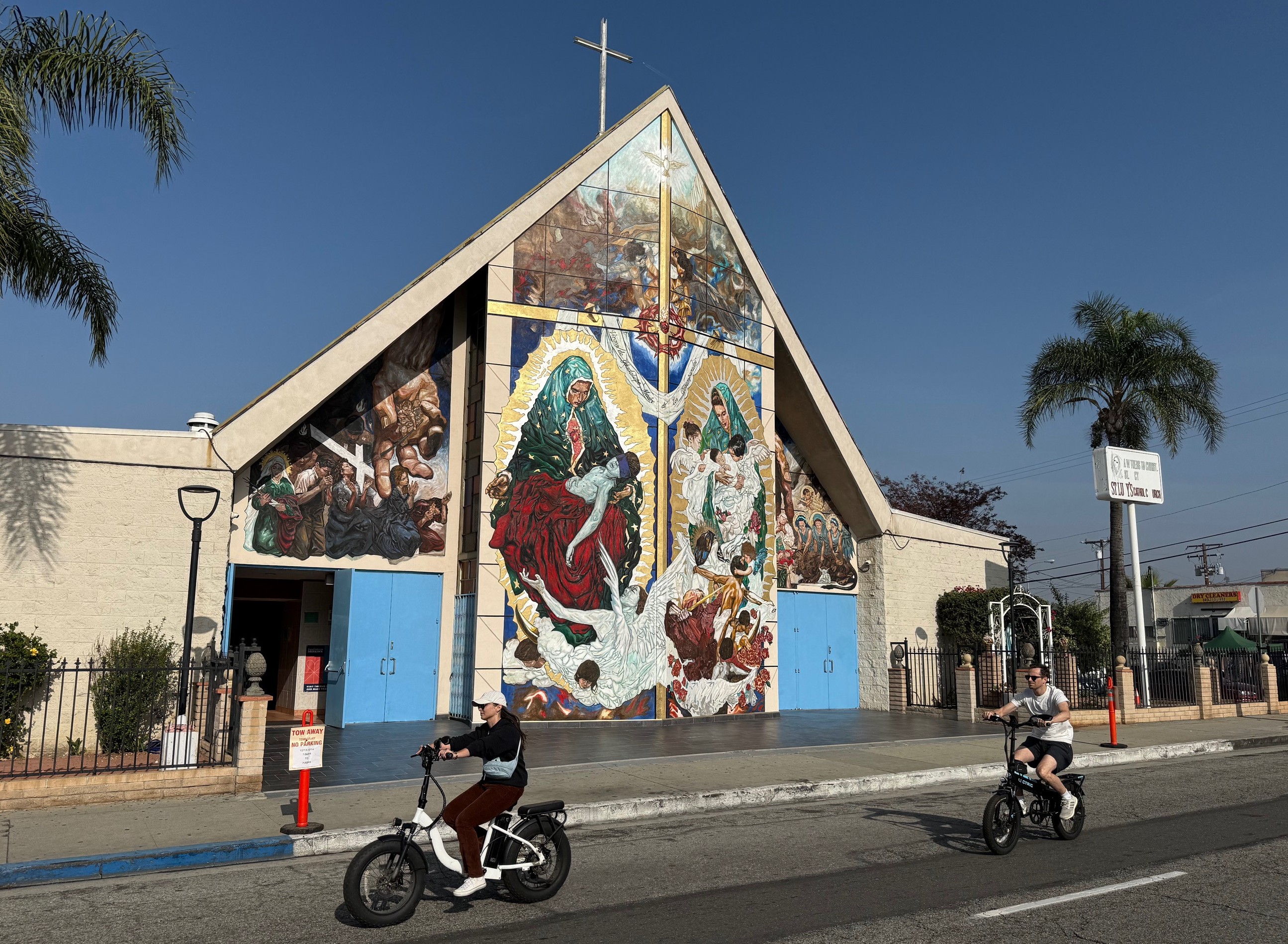American bicycling trips skyrocketed 26 percent at the height of the COVID-19 bicycling boom, but the surge was much larger in small metros than big cities that liked to bike before, a new study finds.
And the same study — from mobility analytics firm Streetlight Data — found that as cars returned to the road, communities of all sizes failed to implement the kind of safe street redesigns that could have kept more of their residents on two wheels.
In their new report, Streetlight studied the movements of millions of anonymized cell phone users and applied a proprietary algorithm to see if, when, and where they biked during the various state lockdowns. What the number-crunchers found quantified what countless road users have anecdotally observed: 88 of the 100 largest U.S. metros experienced year-over-year increases in cycling this spring that reached a crescendo in June, before tapering off throughout the summer as cars returned to the road.
But even though the bike bubble started to leak, it never fully burst. Riding was still up 11 percent by September — even as driving rates stayed down 6.5 percent. That's a major shift in modality that experts think can't be explained by an increase recreational riding alone.
"I’m an avid cyclist I definitely saw more people on bike lanes and in the road than I normally do [this spring and summer. — and a lot of people those people seemed to be new to cycling, or at least, they weren't wearing spandex like me," said Phaedra Hise, director of content for the firm. "It was pretty gratifying to look at the national data...It's really a planner’s dream."

Interestingly, the cities that sustained the largest increases over time weren't always the best-known bike Meccas before quarantine — though many had acted proactively before the pandemic to keep cyclists safe.
Just 15 of the cities that experienced a 75-percent or better increase in bikes on the road at the peak of the boom also managed to maintain a 50-percent increase come September — and while cycling-obsessed and infrastructure-rich Little Rock comes as no surprise, Grand Rapids, Mich. isn't nearly as well known for welcoming riders. That may be evidence that the city's recent investments in increasing cyclist safety are paying off big during the pandemic.
By contrast, cycling rates fell in big cities — but analysts at Streetlight emphasized that some of those decreases are probably due to the fact that high concentrations of white-collar workers who biked to work before were now staying home.
Weekday ridership fell in New York City, for instance, but rose on the weekends. Riders also shifted their routes from away from the central business district.

But some of the most interesting cities in the study were those who seemingly squandered a bicycling bonanza — but could still make up for lost ground with simple, inexpensive interventions.
Leaders in surprising cities like Dayton, Ohio and Oxnard, Calif. caught a glimpse of an untapped reserve of would-be riders early in the pandemic, and might be wise to de-prioritize car travel if they want to see those cyclists ride again. Meanwhile, biking capitals like Madison got a reminder not to rest on their laurels and keep adapting their transportation networks to the unique needs of their road users in this volatile time.
Across all the cities they studied, Streetlight also overlaid census demographics to understand which racial, economic and other demographic groups were best represented — and consistently found that biking was up across the board.
"We were definitely surprised that [the groups who rode most were] not historically what planners have tended to assume," said Hise. "These are not just suburban white people at a higher income level out there [riding for fun.] We’ve consistently found that it goes across demographic lines.”
But Hise also says that those promising trend lines could easily change if planners aren't careful about prioritizing the needs of those who face the highest barriers to biking, like BIPOC, the low-income, the elderly, and children — and that doing so starts with watching the data closely, especially in volatile times like these. That would be a radical departure from the approach of most planning departments, many of whom do a nominal bicycle and pedestrian count once a year rather than obsessing over data year-round.
"You can’t make an assumption [about who rides bikes or doesn't] based on last month’s data, much less last year’s data," Hise emphasized. "This is not a one-and-done. You can't take a report once a year and say, 'Excellent, we’ve got our bike data and we’re going to roll with it.' You really need to keep tabs on it, and work hard to adapt your streets to the needs of the people who use them."







